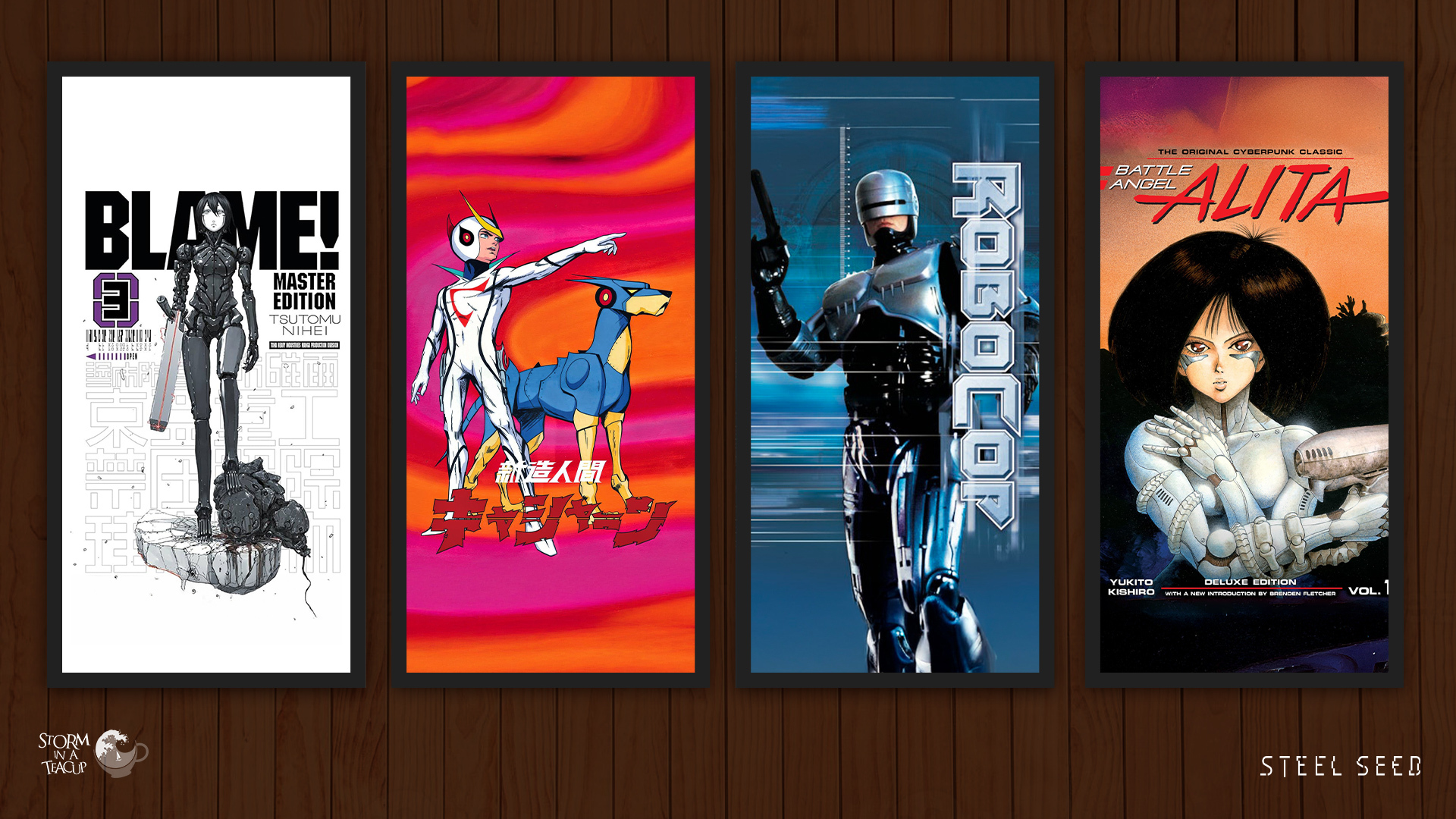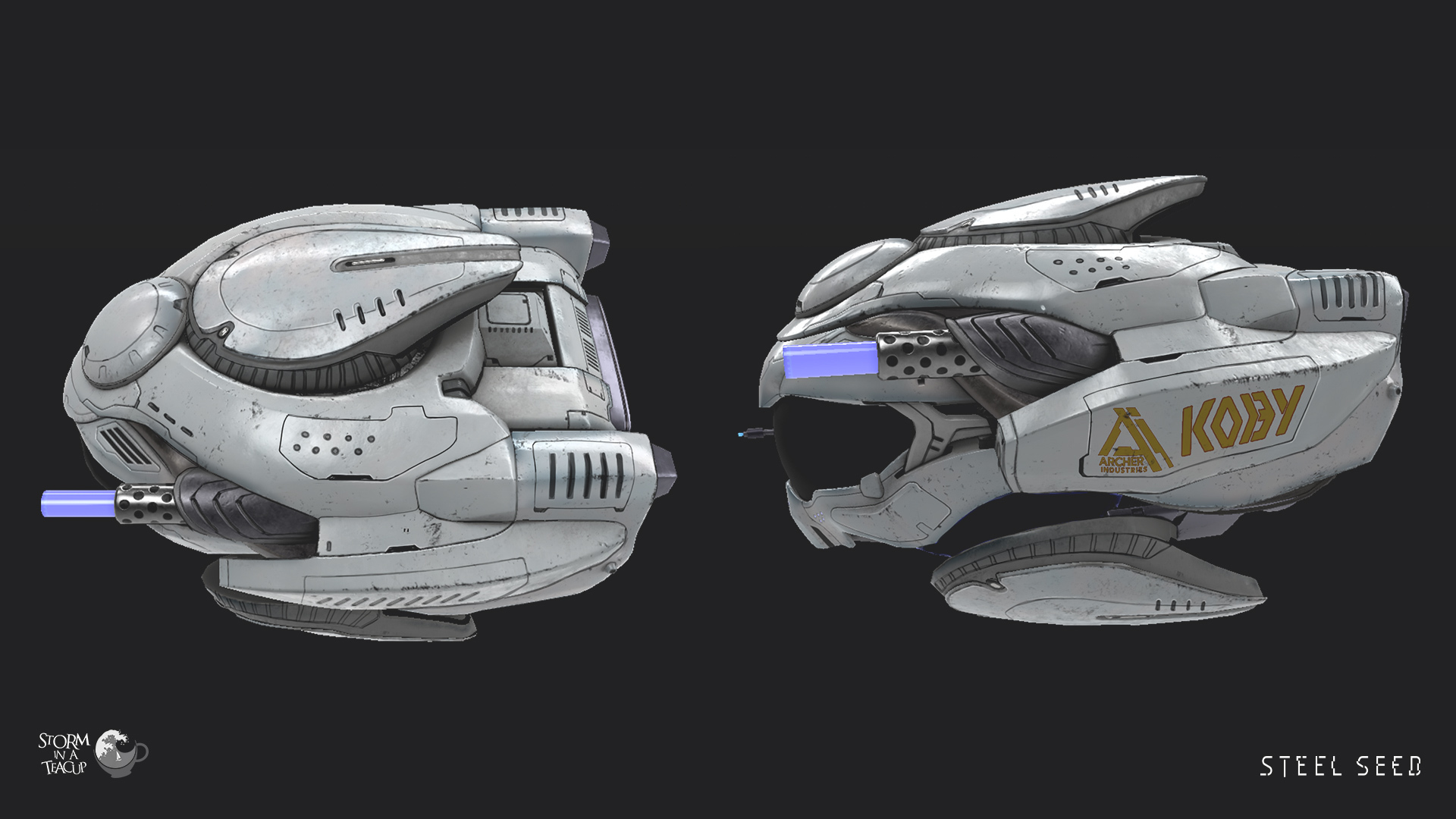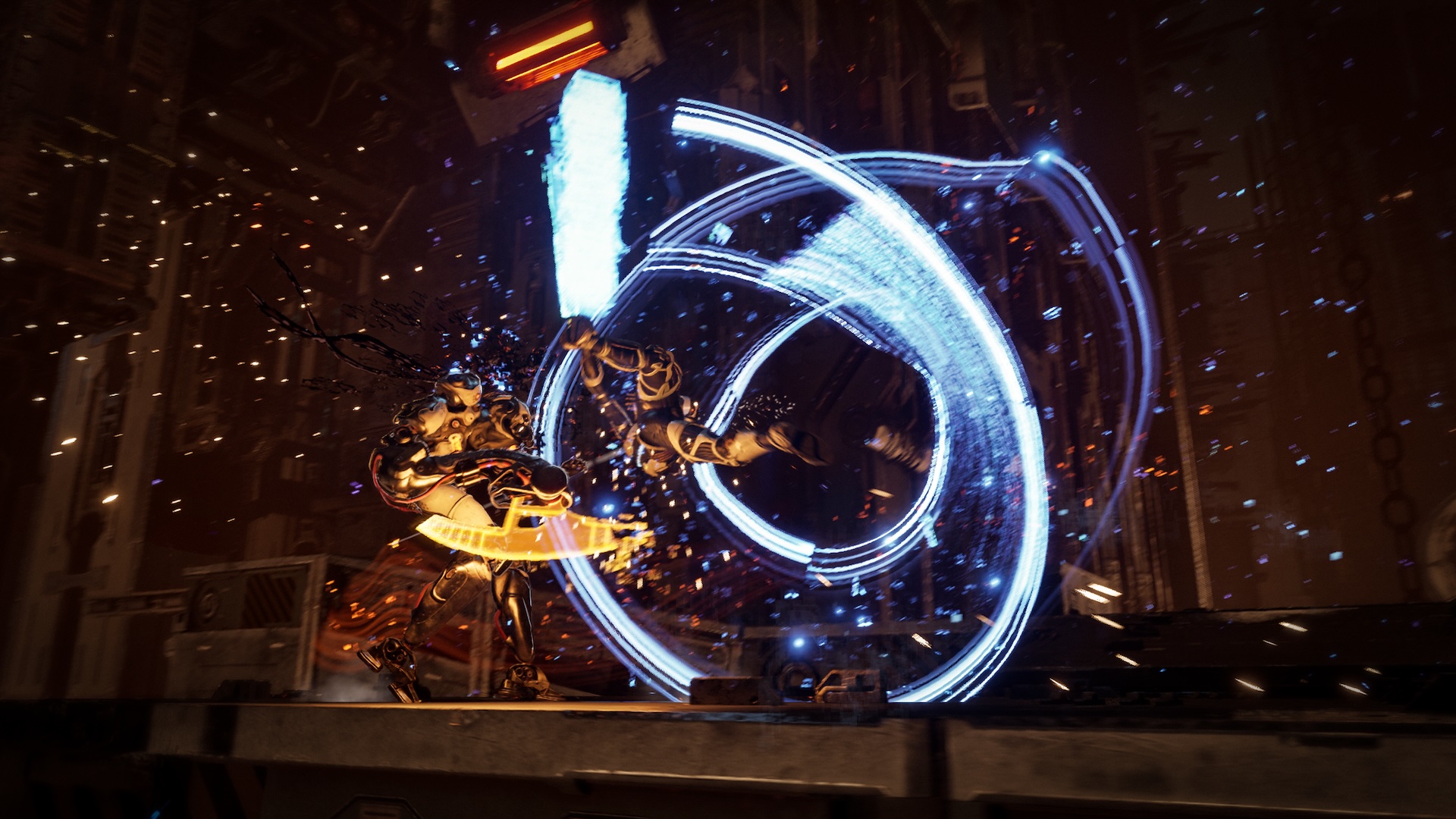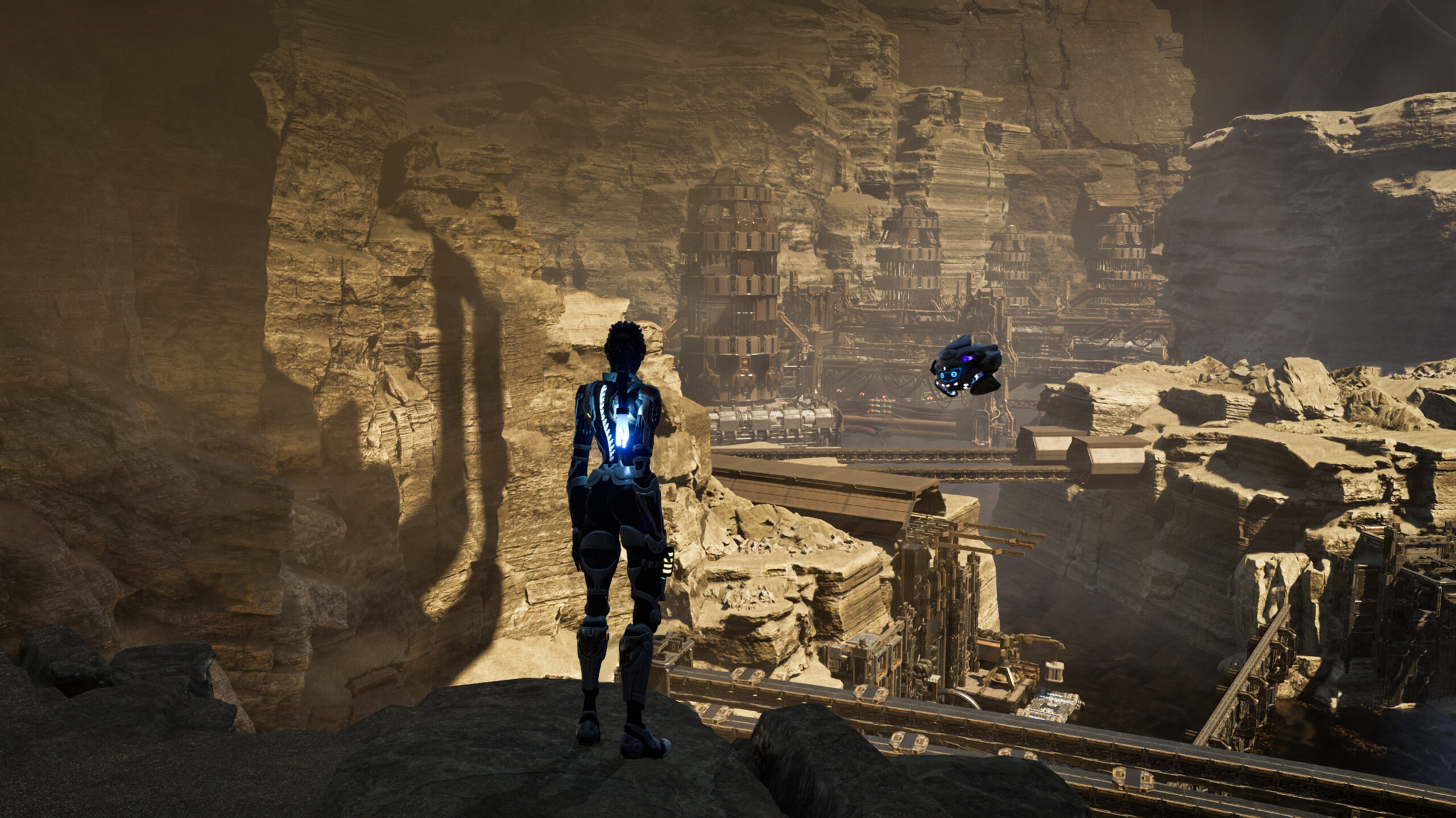So, Steel Seed is finally out on Xbox Series X|S, and get this – the developers are pulling back the curtain on how they brought Zoe, the main character, to life. Storm in a Teacup, the studio behind it all, really wanted Zoe, who’s a robot, to straddle that line between mechanical and, well, deeply human. It’s kind of interesting how they did it; by adding these really subtle, human-like movements and even a bit of vulnerability to her animations, you almost forget she’s not flesh and blood. The look? Think cyberpunk meets anime, but with a sharp eye on making sure she’s readable in the thick of gameplay.
Now, Koby, Zoe’s little drone buddy, that was an interesting one. He started out as just another thing to help you play the game, but he ended up becoming this anchor, emotionally speaking, for Zoe. And those action scenes? They call them “Michael Bay Sequences,” which honestly is pretty apt. They’re all about showing how Zoe handles the heat, pushing her to react, and giving players that high-octane rush. The developers are even dropping some hints, like keeping an ear out for Koby’s prompts and using sound and light to find your way. It’s more than just blasting through levels; it’s this emotional ride about finding yourself, bouncing back from anything, and figuring out what it actually means to be human, or in Zoe’s case, to become something more than just a machine. I think Zoe’s journey, where she’s taking back control and finding where she fits in a world run by AI, is especially poignant.
Summary
- From Sketch to Soul: How We Created Zoe in Steel Seed.
- The face of Steel Seed: Crafting Zoe’s story, style, and spirit.
- Behind the scenes of Steel Seed.
After five years in development, Steel Seed has officially launched on Xbox Series X|S — and whether you’re just starting your journey or well into the story, there’s more beneath the surface worth exploring. In this behind-the-scenes breakdown, we’re diving into the creative and technical process behind Zoe, the game’s central character. You’ll learn how Storm in a Teacup — a small team of around 20 developers based in Italy — approached the challenge of building a protagonist who is both machine and deeply human.
From early concept art to animation and narrative design, this article unpacks how Zoe’s robotic form was carefully balanced with emotional depth. These design choices don’t just affect how she looks or moves — they directly shape how players engage with the world, make decisions, and connect with the game’s story. Steel Seed isn’t just a sci-fi action title; it’s a layered experience about identity, resilience, and the personal cost of survival.
Character Core: From Concept to Conflict
Zoe’s story begins in mystery: she awakens alone in a robotic body deep within an AI-dominated facility, with no memory of how she got there. This setup posed an immediate creative challenge — how do you design a character that players can emotionally relate to while she herself is unsure of what she is?
Our solution was to emphasize vulnerability in her animations and body language. We intentionally contrasted mechanical precision with subtle, human-like motion — shaky breaths, cautious glances, hesitant footsteps — so players would instinctively connect with Zoe before even hearing her motivations.

Design Influences & Visual Language
Zoe’s look was heavily inspired by a blend of cyberpunk and anime sources: “Alita”, “Casshern”, and “Blame!” formed the visual backbone. But more importantly, her design needed to serve gameplay readability. Her glowing joints, for example, are not only stylistic but also provide feedback in low-light environments. Her expressive eyes — built with an advanced eye-tracking rig — became a key storytelling tool for in-game cinematics.

Emotional Anchors: Koby’s Narrative Purpose
No character like Zoe could exist in isolation. Enter Koby — a small, expressive drone initially designed as a gameplay mechanic. Very quickly, however, Koby became much more: an emotional anchor. His design language evolved to reflect that. His “face,” for example, is an LED screen that shows simple emoticons in real time, allowing him to “talk” in tones and visuals, which helps Zoe (and players) feel less alone.
Creating Koby meant fusing function and emotion. He helps solve puzzles, unlocks doors, and scouts ahead — but he also beeps in concern when Zoe is hurt and celebrates small victories. It’s AI companionship by way of empathy. He’s based on a robot originally designed and modeled by the Storm in a Teacup head when he was just 19 years old.

Bringing the Bay: Designing Cinematic Action
Steel Seed features cinematic action moments we internally dubbed “Michael Bay Sequences.” These were built to break tension and change pacing through high-octane gameplay: collapsing bridges, high-speed chases, massive explosions. But even here, storytelling was key.
Each of these sequences was crafted not just to look great, but to show how Zoe reacts under pressure. We used dynamic camera systems and occasional 2D perspective shifts to amplify spectacle without sacrificing player control. These scenes are also crucial moments for Koby to shine — rescuing Zoe, alerting her to hazards, or navigating tight quarters at speed.

Tips & Tricks for Players: Reading Zoe’s World
While Zoe’s enhanced mobility (wall runs, air dashes, silent takedowns) gives her an edge, surviving the Facility is all about environmental awareness.
- Look for Koby’s cues: He often highlights hidden routes or dangers you might miss.
- Use sound: Footsteps, enemy drones, and power surges all emit unique audio—you can use them to time movement and stealth.
- Read the lighting: We use subtle visual language—flickering bulbs, red vs blue tones—to help players intuit enemy activity and puzzle mechanics.
These soft cues are all part of what we call passive storytelling—immersing players without pausing the action.
Legacy of Zoe
At its core, Steel Seed is not just about survival — it’s about what defines us as human beings. What makes Zoe work isn’t just that she’s cool or capable — it’s that she’s scared, conflicted, and trying anyway. Her journey isn’t just about defeating enemies—it’s about reclaiming agency. Players may see a machine, but what we hope they feel is a very human soul.
Steel Seed is more than an action game — it’s an emotional blueprint of identity told through pixels, motion, and sound. And Zoe, more than anyone, carries that blueprint.
On behalf of the developer, Storm in a Teacup and all of ESDigital Games, thanks for all of the support during all these years! Steel Seed is finally here and it’s time to save humanity.
Steel Seed
ESDigital Games
Steel Seed is a single player stealth-action adventure game set in a dark sci-fi world. In her epic journey inside a hostile underground facility run by AIs, Zoe is alone with Koby, a flying drone, as her only companion.
The sentiment of this content is overwhelmingly positive and enthusiastic. The tone is informative, yet energetic and engaging, with a sense of excitement and pride in the game “Steel Seed” and its protagonist, Zoe.
The developers’ passion for the game shines through in the text, as they share the story of how Zoe was created, from concept to final product. The language used is rich and vivid, with a focus on the emotional depth and humanity of the character, despite being a robot. The use of words like “soul”, “vulnerability”, and “empathy” emphasizes the game’s themes of identity, resilience, and connection.
The content also has a sense of accomplishment and celebration, as the game has finally been released after five years of development. The tone is encouraging and inviting, with the developers expressing gratitude to their supporters and inviting players to experience the game.
The only slightly neutral sections are the “Tips & Tricks” and “Legacy of Zoe” parts, which are more instructional and reflective in tone. However, even these sections maintain a positive and uplifting tone, emphasizing the game’s unique features and the emotional resonance of Zoe’s story.
Overall, the sentiment of this content is one of excitement, pride, and enthusiasm, with a strong focus on the game’s emotional depth and the developers’ passion for their creation.
On a scale of -1 to 1, where -1 is extremely negative and 1 is extremely positive, I would rate the sentiment of this content as a 0.9, indicating a strongly positive and enthusiastic tone.
Some examples of positive sentiment in the content include:
* “At its core, Steel Seed is not just about survival — it’s about what defines us as human beings.”
* “What makes Zoe work isn’t just that she’s cool or capable — it’s that she’s scared, conflicted, and trying anyway.”
* “Thanks for all of the support during all these years! Steel Seed is finally here and it’s time to save humanity.”
* “Steel Seed is more than an action game — it’s an emotional blueprint of identity told through pixels, motion, and sound.”
These quotes illustrate the positive and enthusiastic tone of the content, emphasizing the game’s themes, characters, and emotional resonance.
Here are some similar news articles with links related to the game “Steel Seed” and its development:
- Game Informer: Steel Seed Preview – https://www.gameinformer.com/preview/2023/02/15/steel-seed-preview
- IGN: Steel Seed Hands-On Impressions – https://www.ign.com/articles/steel-seed-hands-on-impressions
- Kotaku: The Making Of Steel Seed, A Game About A Robot With A Human Soul – https://kotaku.com/the-making-of-steel-seed-a-game-about-a-robot-with-a-hu-1850326679
- GameSpot: Steel Seed Dev On Creating A Strong Female Protagonist – https://www.gamespot.com/articles/steel-seed-dev-on-creating-a-strong-female-protagoni/1100-6511107/
- Polygon: Steel Seed is a sci-fi action game with a heart – https://www.polygon.com/2023/5/10/23258724/steel-seed-sci-fi-action-game-scifi-robot-human-story
- Destructoid: Steel Seed’s robotic protagonist is more than just a pretty face – https://www.destructoid.com/steel-seeds-robotic-protagonist-is-more-than-just-a-pretty-face/
- VentureBeat: Steel Seed: How the devs created a believable robot-human hybrid – https://venturebeat.com/2023/05/11/steel-seed-how-the-devs-created-a-believable-robot-human-hybrid/
These articles provide more insights into the game’s development, its protagonist Zoe, and the themes and mechanics that drive the game.

